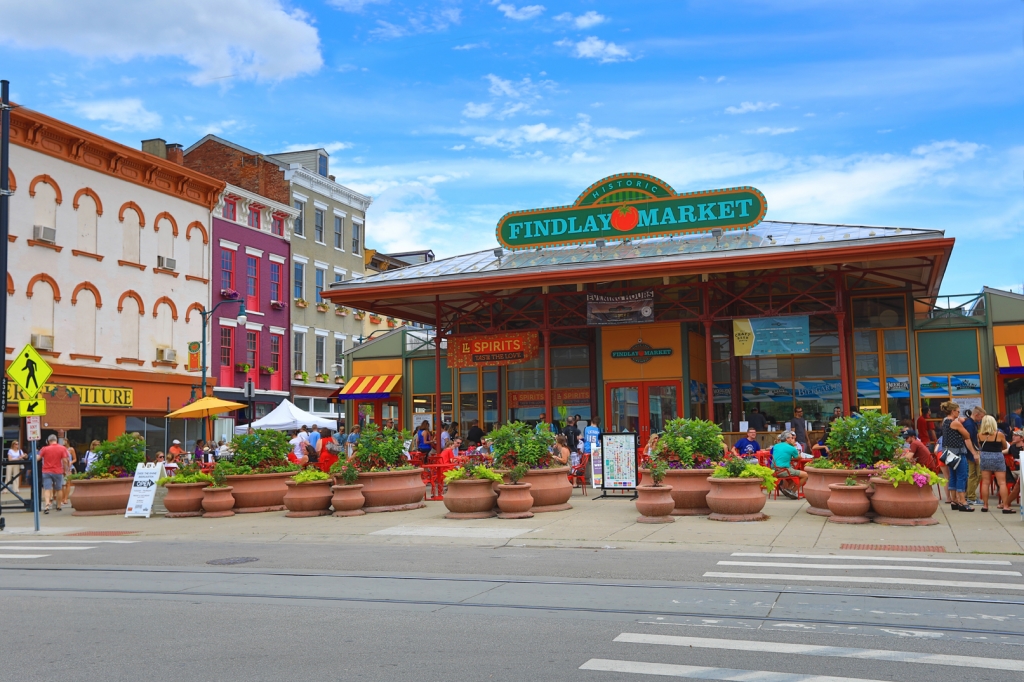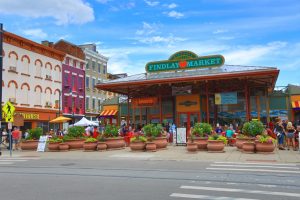The Numbers
For the first time in more than a decade, Cincinnati has seen its population surpass the 300,000 mark, according to U.S. Census estimates released last year. The Midwestern city – the third largest in Ohio after Columbus and Cleveland – continues to experience growth in its urban core, which includes downtown, Over-the-Rhine (OTR) and the West End. A recent Cincinnati Business Courier article states that OTR’s population has increased from 5000 residents in 2000 to roughly 8000 currently. City leaders cite development surrounding a stadium for the FC Cincinnati Major League Soccer team that’s currently under construction in the West End as a potential catalyst to double the urban core population.
The Pulse
“The city of Cincinnati is made up of 52 distinct neighborhoods, many with walkable business districts that offer one-stop neighborhood shopping,” says Claudia Cerchiara, Retail Client Leader at BHDP Architecture (Cincinnati). “Some neighborhoods have fared better than others since the growth of first-ring suburbs.”
While much redevelopment talk is centered around OTR, Cerchiara notes downtown and the nearby neighborhoods of Madisonville, College Hill, Oakley and Walnut Hills are all undergoing revitalization.
The Hotspots
Advertisement
According to Robyn Novak, native Cincinnatian and VP, Managing Creative Director at local firm FRCH Nelson, the Queen City is in the process of a resurgence. “From our wealth of art deco architecture to our German heritage, the city has learned to celebrate its history in the form of unique and inspirational environments.”
Leading the charge, she says, is OTR, which honors the city’s beer-brewing heritage with breweries such as Christian Moerlein Brewing Co., Rhinegeist Brewery and Taft’s Ale House, situated among its mix of always-packed restaurants. National retailers like Warby Parker and Bonobos have set up shop in Cincinnati, while local boutiques such as MICA 12/v, Continuum, Elm & Iron and Sloane Boutique continue to thrive.
Obstacles and Opportunities
In the midst of all of the revitalization, there is a significant call for preservation of historic spaces and architecture. For example, downtown’s vacant Terrace Plaza Hotel, an international style building constructed in 1948, is being considered for local historic landmark status after several developers expressed interest in turning it into a mixed-use project.
Even with so much change, traditional retail concepts have still struggled in Cincinnati’s downtown core as most of the development has been focused on hotels, restaurants and residential apartments and condos.
“Downtown lost most of the retail, but added a lot of different food options throughout,” Cerchiara says. “And events [such as] Taste of Cincinnati, Oktoberfest Zinzinnati and Salsa on the Square bring plenty of people to the area.” – Lauren Mang
Advertisement


 Photo Gallery7 days ago
Photo Gallery7 days ago
 Headlines7 days ago
Headlines7 days ago
 Headlines1 week ago
Headlines1 week ago
 Headlines2 weeks ago
Headlines2 weeks ago
 Headlines1 week ago
Headlines1 week ago
 Designer Dozen2 weeks ago
Designer Dozen2 weeks ago
 Designer Dozen5 days ago
Designer Dozen5 days ago
 Headlines7 days ago
Headlines7 days ago


















